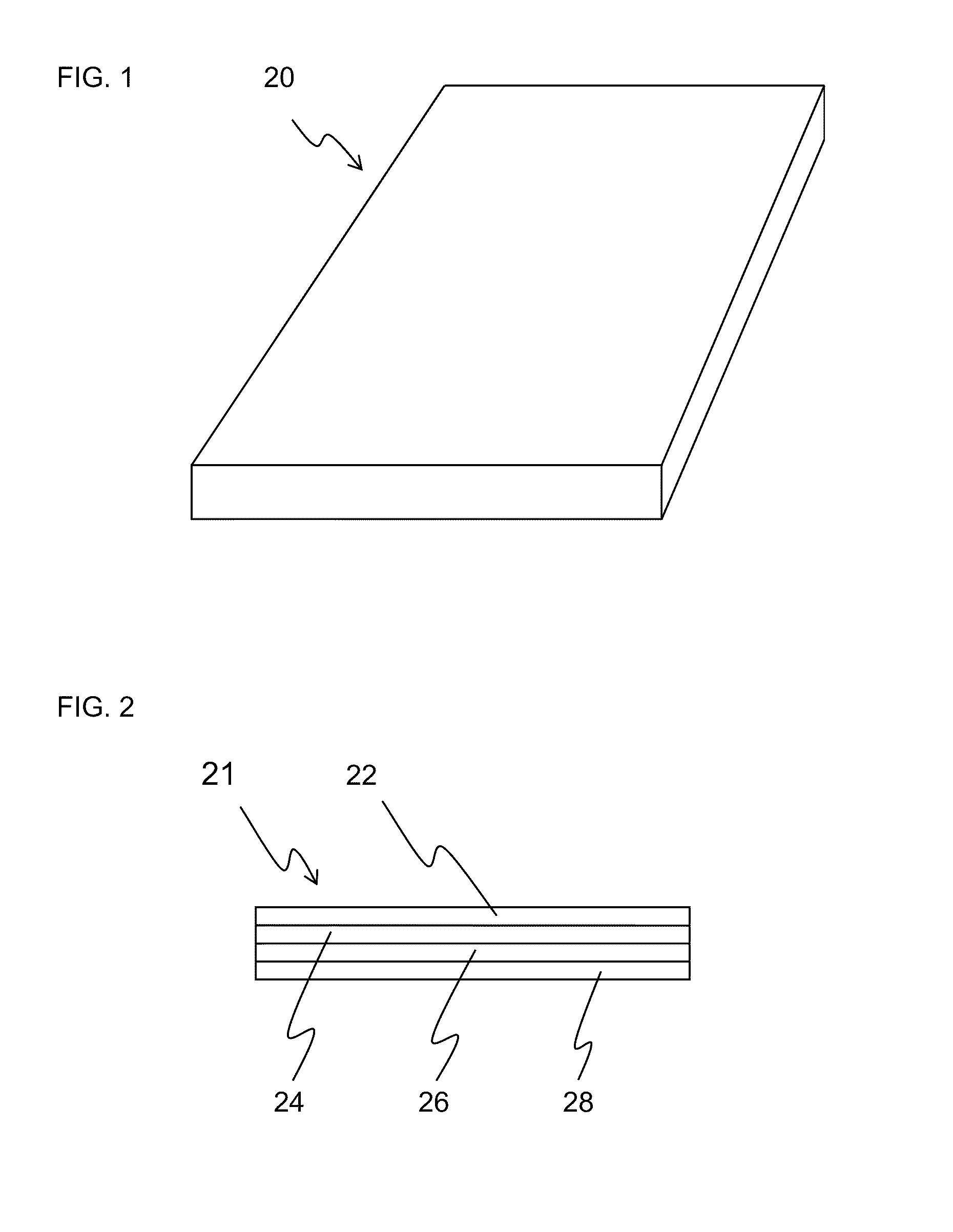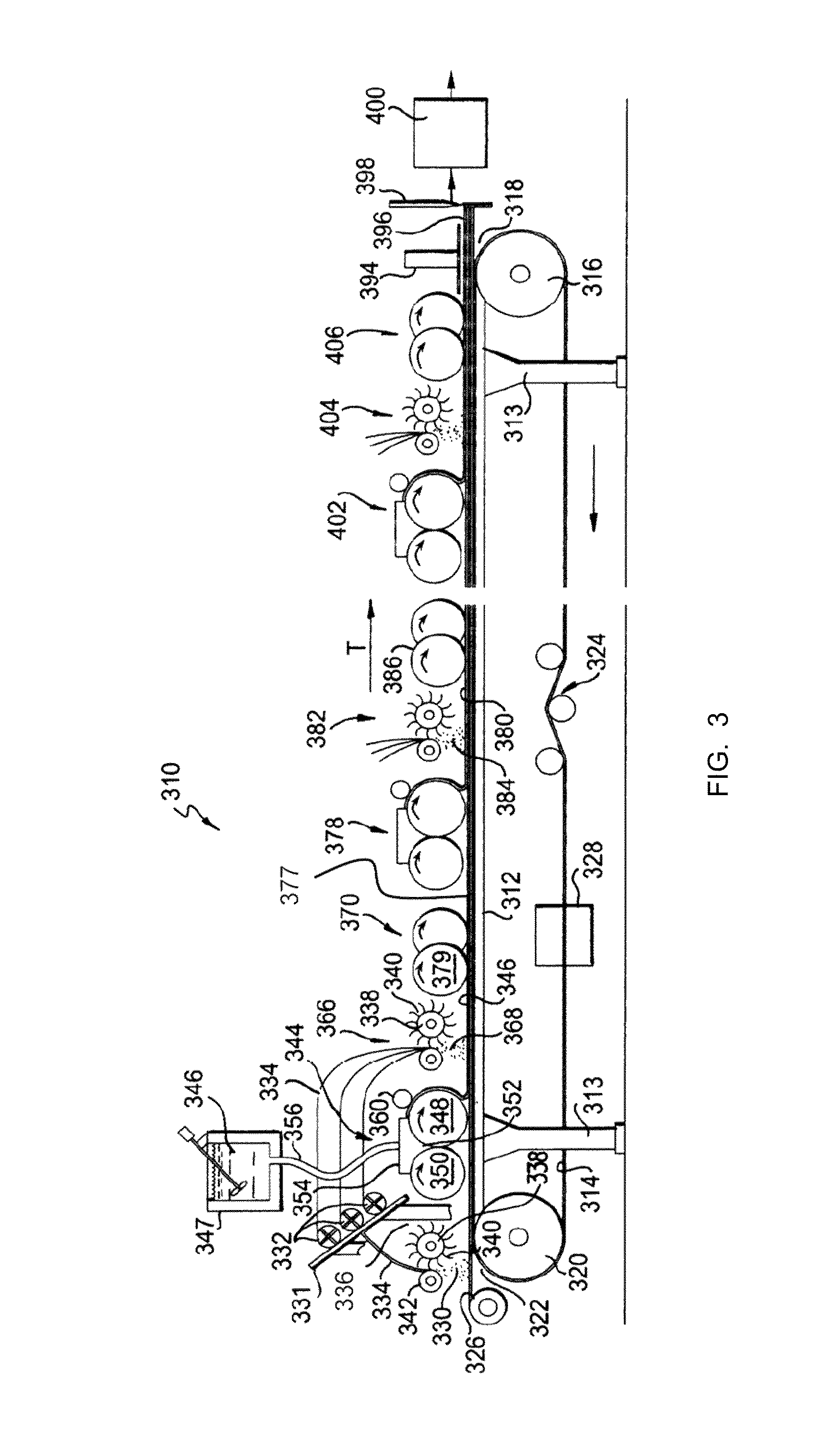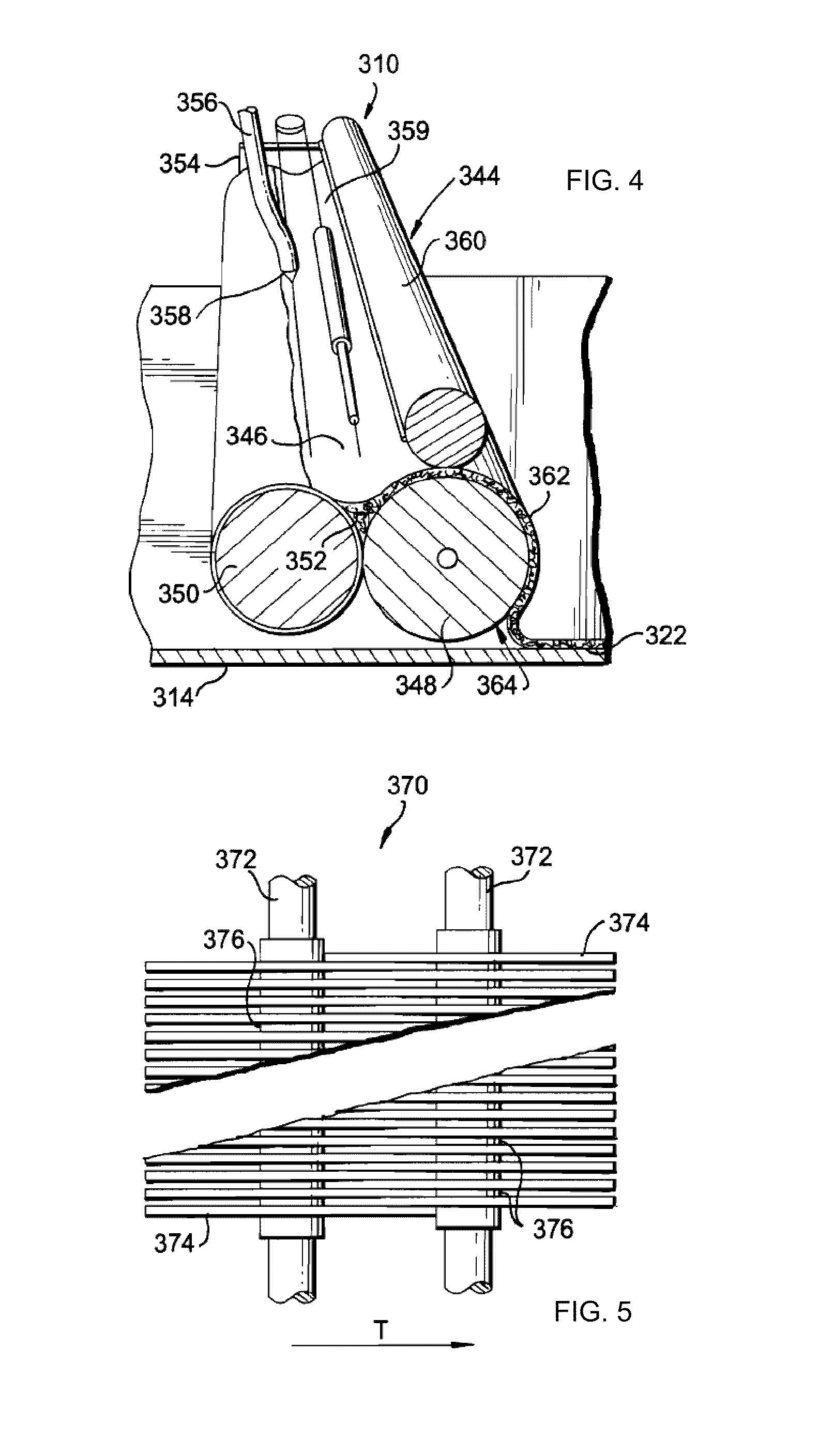High performance non-combustible gypsum-cement compositions with enhanced water durability and thermal stability for reinforced cementitious lightweight structural cement panels
a lightweight structural cement and non-combustible technology, applied in the direction of climate sustainability, water-setting substance layered product, solid waste management, etc., can solve the problem of not being able to meet all the desired performance properties of the present structural cement panel, and achieve the effect of reducing weigh
- Summary
- Abstract
- Description
- Claims
- Application Information
AI Technical Summary
Benefits of technology
Problems solved by technology
Method used
Image
Examples
example 1
[0223]This example shows the slurry properties of mixes containing different amounts of perlite as filler in comparison to the original mix employing ceramic microspheres (MS). Typical slurry properties of interest are slump, slurry density, set time and compressive strength at different ages (7, 14 and 28 days). All mix ingredients were pre-conditioned in sealed plastic bags to laboratory conditions at 75-80° F. for at least 24 hours prior to mixing, followed by their mixing using a Hobart mixer at medium speed to achieve uniform dispersion. Dry powders which include cement binder and fillers were proportioned at the amounts shown above under the heading Examples. Superplasticizer was added at a dosage of 0.41% by weight of cement binder for the MS mixes, 0.47% for the partial perlite mixes and 0.53-0.56% for the full perlite mixes. Tartaric acid was added at varying dosages depending on the particular experiment.
[0224]Slump was measured by filling a 4″ (10.2 cm) tall×2″ (5.1 cm) d...
example 2
[0234]One critical material property in the manufacture of SCP panels is the slump loss of the slurry. Normally, relatively high slurry fluidity is desired in the initial stages of the forming line where slurry is mixed and formed, while a stiff and very low fluidity (preferably already set) material is desired in the latter stages of the forming line when the SCP panel is cut and transferred to carts. Therefore, mixes with higher rates of slump loss are more desirable.
[0235]In this example, five mixes were evaluated (2 with MS and 3 with full perlite) at varying content of tartaric acid. The proportion of cement binders for these mixes was as described above and superplasticizer was added at a content of 0.45% and 0.56% by weight of cement binder for the MS and full perlite mixes respectively. Tartaric acid was added at dosages of 0.008 and 0.02% by weight of cements for the two MS mixes and at dosages of 0.01, 0.02 and 0.03% by weight of cements for the f...
example 3
Flexural Performance of Fiber Reinforced Panels
[0237]In this example, glass fiber reinforced cement panels were made using partial and full perlite formulations for evaluation of panel flexural performance. Dry powder consisting of cement binder and filler (CM, partial perlite or full perlite) was batched according to the proportions described under “Description”. Chopped AR glass fiber was added to the mix such that the resulting fiber content in the panel was 2.5% by volume. Panels were made using XY equipment which delivers slurry through a spray nozzle while also dispensing chopped glass fiber through a cutter attached to the slurry spray nozzle. The flow of slurry and rate of fiber chopping were calibrated such that the resulting fiber content in the product was at 2.5% by volume. Three-by-six feet (3′×6′) (0.91 m×1.8 m) panels were produced and 6″×12″ (15.2 cm×30.5 cm) specimens were saw-cut from these panels. Subsequent to cutting from panels, specimens were moist cured until...
PUM
| Property | Measurement | Unit |
|---|---|---|
| particle density | aaaaa | aaaaa |
| median diameter | aaaaa | aaaaa |
| median diameter | aaaaa | aaaaa |
Abstract
Description
Claims
Application Information
 Login to View More
Login to View More - R&D
- Intellectual Property
- Life Sciences
- Materials
- Tech Scout
- Unparalleled Data Quality
- Higher Quality Content
- 60% Fewer Hallucinations
Browse by: Latest US Patents, China's latest patents, Technical Efficacy Thesaurus, Application Domain, Technology Topic, Popular Technical Reports.
© 2025 PatSnap. All rights reserved.Legal|Privacy policy|Modern Slavery Act Transparency Statement|Sitemap|About US| Contact US: help@patsnap.com



